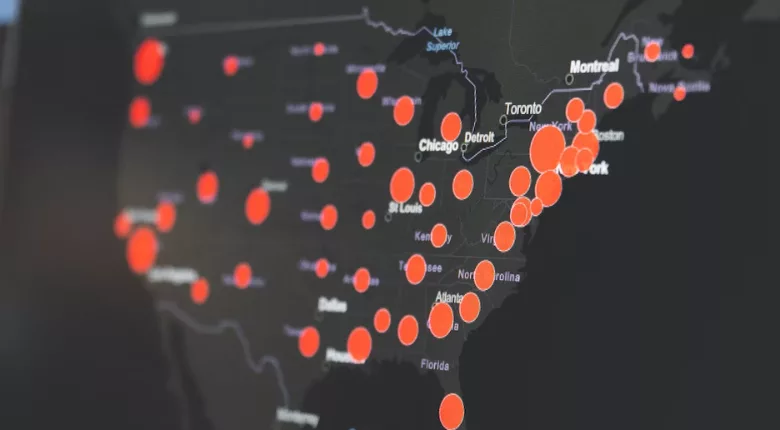IFSAC’s Objectives for 2024–2028 to Include Better Campylobacter Source Estimates, Making Non-O157 STEC a Priority, and More

Image credit: Martin Sanchez via Unsplash
The Interagency Food Safety Analytics Collaboration (IFSAC) has published its list of priorities for 2024–2028. IFSAC is a joint effort between the U.S. Centers for Disease Control and Prevention (CDC), the U.S. Food and Drug Administration (FDA), and the U.S. Department of Agriculture’s Food Safety and Inspection Service (USDA’s FSIS) to improve coordination of federal food safety analytics efforts and address cross-cutting priorities for food safety data collection, analysis, and use.
Since its inception in 2011, IFSAC’s focus has been foodborne illness source attribution, with an emphasis on Campylobacter, Escherichia coli O157, Listeria monocytogenes, and Salmonella.
In the coming years, IFSAC will remain focused on generating accurate and actionable estimates for foodborne illness source attribution in the U.S. by leveraging the latest science, data, and methods. IFSAC will continue to publish updated estimates of foods contributing to foodborne illness through annual reports and peer-reviewed scientific publications. Four priorities will guide IFSAC’s work for 2024–2028.
Priority 1: Improve Foodborne Illness Source Attribution Estimates for Campylobacter
Because IFSAC’s annual foodborne illness source attribution reports for Campylobacter have differed considerably from the sources of non-outbreak associated illnesses as reported by other epidemiological studies, the collaboration’s first priority for 2024–2028 is to explore new data sources and alternative methods to better estimate the sources of foodborne campylobacteriosis, and to harmonize estimates across different approaches and data sources.
Since the food products most frequently associated with Campylobacter outbreaks (i.e., raw milk and chicken liver) are rarely consumed, outbreak data are not representative of sources of Campylobacter infection in the general U.S. population. Therefore, IFSAC paused reporting of attribution estimates for Campylobacter in 2022, with the aim of producing more reliable and generalizable campylobacteriosis source attribution estimates in the future by:
- Examining alternative data from genomics, sporadic disease reporting, FoodNet case-control studies, FoodNet population surveys, and other sources
- Exploring analytic approaches such as estimating population attributable fractions using existing FoodNet case-control and population survey data and reanalysis of case-control data, developing and refining machine learning approaches using whole genome sequencing (WGS) data from known sources to predict the sources of illnesses with unknown sources, and other methods.
Priority 2: Develop Foodborne Illness Source Attribution Estimates for Non-O157 Shiga Toxin-Producing E. coli (STEC)
As non-O157 STEC is an important cause of foodborne illness in the U.S. and is of increasing importance to federal food safety regulatory agencies, the second objective for IFSAC is to expand its list of priority pathogens to include non-O157 STEC and provide source attribution estimates in IFSAC’s annual foodborne illness source attribution reports. IFSAC will leverage existing non-O157 STEC data and analytical methods to estimate source attribution for the pathogen and incorporate estimates in annual reports.
Looking for quick answers on food safety topics?
Try Ask FSM, our new smart AI search tool.
Ask FSM →
Priority 3: Refine Foodborne Illness Source Attribution Estimates Using Data from Non-Foodborne Sources of Pathogens
During 2024–2028, IFSAC also aims to consider incorporating data on non-foodborne sources of priority pathogens, such as animal and environmental sources, into IFSAC’s annual foodborne illness source attribution estimates to better refine and contextualize the data. Although the priority pathogens included in IFSAC’s analyses are spread predominantly through foodborne transmission, the pathogens also spread through contact with water, human, animal, and environmental sources. To generate more accurate estimates for foodborne illness source attribution, IFSAC analysts will explore available data for non-foodborne sources of the priority pathogens and consider methods to incorporate the information in communications.
Priority 4: Finalize Existing Analyses and Disseminate Findings
Finally, IFSAC is engaged in numerous projects, many of which have not been communicated through peer-reviewed journal articles or other publications. To ensure sufficient resources for IFSAC’s priority research areas during 2024–2028, IFSAC will review the status of all projects, determine which are close to completion, and identify which should be finalized and by when. During the final stages of each project, IFSAC will pursue and implement appropriate communication for each project, such as peer-reviewed publications, public reports, webinars, conference presentations, or updates to the IFSAC website to disseminate findings to the appropriate audiences (e.g., regulatory agencies, public health partners, academics, media, industry, and the public).







